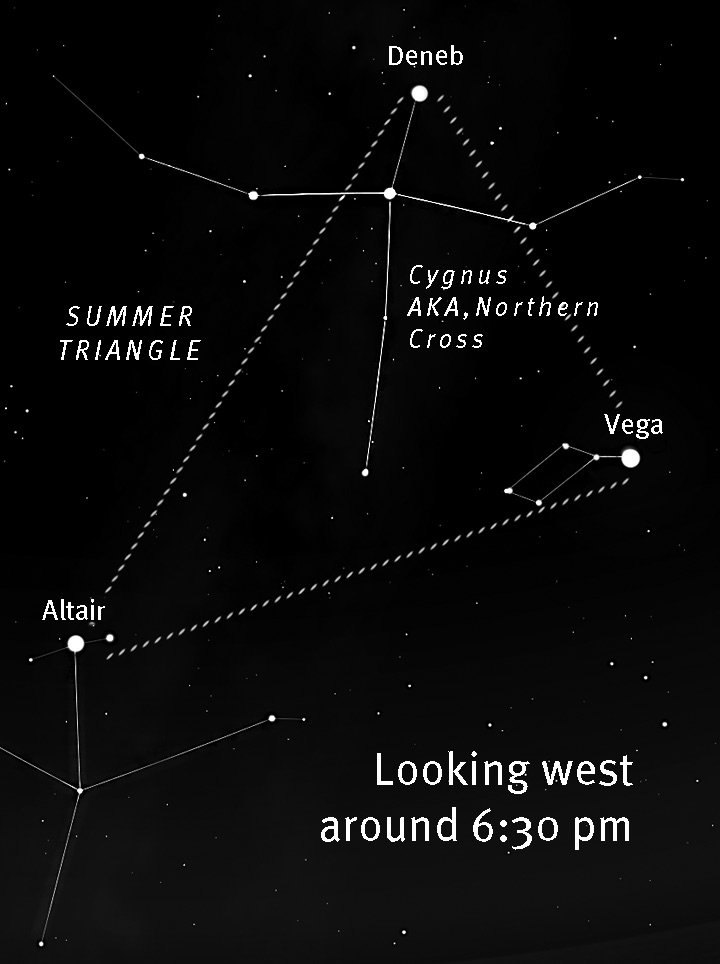
December 21 marks the Winter Solstice, the shortest daylight of the year and the official start ofwinter. From our perspective, the sun hits the southernmost point in the sky for the year—notice how the sun rises in the southeast and sets in the southwest, making a small arc across the sky.
The annual Ursid meteor shower peaks in the overnight hours of Dec. 22-23. This shower usually produces 10 meteors an hour at peak although a few can be seen on Friday and Saturdays nights (probably your best bet, as the forecast calls for clear skies). The radiant, where the meteors appear to come, is above the “bowl” of the Little Dipper.
Whether you’re looking for meteors or not, the Little Dipper (officially the constellation Ursa Minor, the Little Bear) can be hard to locate because of its mostly dim stars. Here’s the trick: First find the Big Dipper (Ursa Major), now low in the north after nightfall and high in the northeast in the early morning hours. Its front bowl stars point out to Polaris the North Star, the end star in the Little Dipper’s handle. It’s also handy to know that the Little Dipper is always a flipped image of the Big Dipper.
At this time of year we get a last look at the Summer Triangle, which dominates the early evening western sky with bright Vega, Deneb and Altair. The crescent moon hangs to the far left Dec. 21-24, helping you see the triangle.
The pinnacle, Deneb, is the alpha star of Cygnus the Swan, the constellation also commonly called the Northern Cross. This time of year it stands upright over the western horizon until around 9 pm, and a symbol to Christians around the world as they celebrate the birth of Christ.
The full moon on New Year’s Day is also another “supermoon” (we had one in December) and the largest moon of 2018, as it occurs close to lunar perigee, the moon’s nearest point to the Earth in its monthly orbit. But wait, there’s more! A second full moon falls on Jan. 31. It also qualifies as a supermoon, plus, it’ll be a total lunar eclipse. Totality begins just before 7 am, so get up an hour earlier to watch the moon darken and perhaps turns red as it slips below the western horizon around 7:10 am. Happy viewing.




